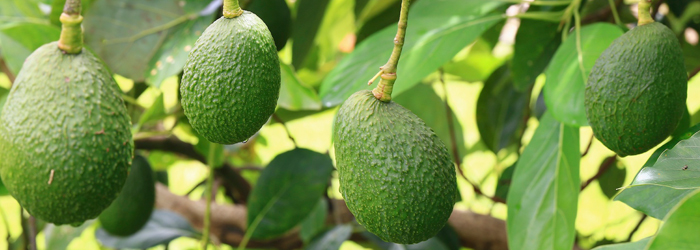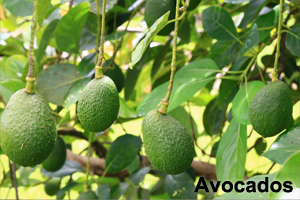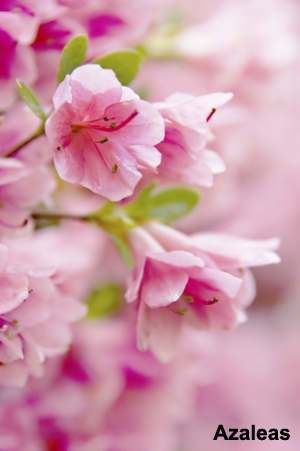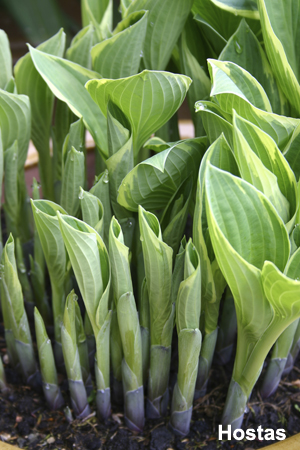The Toughest Stuff to Grow in Arizona
 29 June 2016
29 June 2016 

Six Finicky Plants and Why We Crave Them
Over the years we’ve found that there are several unique plants that many Arizona residents really yearn to have in their yards despite the fact that the odds of success are stacked against them. Again and again these gardeners call our “Rosie on the House” radio program asking if they can grow them or asking why they died.
Jay Harper, Master Gardener and a regular expert on the gardening hour of our broadcast, gave us his list of the six most popular finicky plants and explained why they generally fail to thrive in the Arizona desert.
Avocado Trees

If you love guacamole, you may yearn to grow avocados. But these plants fail partly because it’s too hot in the summer and too cold in the winter. “When people ask me about them,” Harper says. “I always say, ‘Think about Santa Barbara where they grow lots of avocados.’ You need to duplicate that climate of cool, overcast warm summer days and frost-free winters.” Mexico also produces lots of avocados, but they come from coastal areas along the Pacific, not from desert regions.
Azaleas

One of the most important problems for azaleas as well as for other plants on our list is the extreme alkalinity and saltiness of soil in Arizona. Azaleas, camellias and similar plants need acidic soil; that’s why they flourish in the Southeast in places like Georgia and Alabama. To keep azaleas alive here, you need to lower the high pH of desert soil by adding lots of aluminum sulfate and acidic fertilizers to your garden.
Tropical Fruit Trees like Papayas, Mangoes and Bananas
Even though these trees are tropical and seem to love very warm places as are found in our state, they also love the shade. They can also get too cold in winters here and too hot in summer. “People say, ‘Well, they grow in Florida and it’s hot there,’” Harper says. “But it’s hot and humid in Florida, something like a greenhouse. Dehydration is one of the biggest enemies you have in Arizona for your plants.” On the other hand, citrus does very well in Central Arizona and succeeds to some extent in the southern part of the state. So try an orange or a lemon instead.
Hostas

Hostas are shade-loving, leafy perennials very popular in the Midwest. They don’t require a lot of acid in the soil, but they don’t like strong sun. Long stretches of them are often used as borders or something like ground covers. They’re low maintenance and drought-tolerant. Gardeners in the desert say they grow well at first, but then their leaves curl up and the edges turn brown. You’ll see them sometimes in Prescott, Payson and Flagstaff, but not in Phoenix or Tucson.
Peonies
Some gardeners say peonies like a winter chill, but other people say these luxuriant flowering bushes do not need a heavy cold season. You do see them growing sometimes in Prescott, but they are finicky plants and generally prefer cooler climates. They seem to do pretty well in the Northwest United States.
Hydrangeas
Hydrangeas are also fabulous blossoming bushes with immense flowers. They come from Asia and are particularly popular in China, Japan and Korea.  The flowers can be white, blue or pink depending on the pH of soil. Those who cultivate them add aluminum sulfate to the soil to make them come out in different colors. But if you don’t live right on the ocean, you might struggle to grow them. That doesn’t mean it can’t be done.
The flowers can be white, blue or pink depending on the pH of soil. Those who cultivate them add aluminum sulfate to the soil to make them come out in different colors. But if you don’t live right on the ocean, you might struggle to grow them. That doesn’t mean it can’t be done.
Harper suggests that if you want to plant any shrub or tree in Arizona, you should do some research first and then drive around your neighborhood to see if that plant is growing nearby. “If you see a lot of them, then you know that plant will do well in your yard, too. If you don’t see them, you might be taking a chance,” he says.
It’s not impossible to grow unusual plants, Harper says; recently someone who visits his nursery brought him a bouquet of hydrangeas.
“Whenever we tell people that they can’t plant one thing or another, someone will send me photographs of a great plant from their yard,” he says. “Some people live in special shady micro-climates, like Arcadia in Phoenix, where they still have flood irrigation. They can often grow things you can’t grow anywhere else in Phoenix.”
###
RELATED CONTENT:
- DIY Q&A: What are the best tropical potted plants for the desert?
- DIY Q&A: How to care for tulips in Arizona?
- DIY Q&A: Tips for setting up your drip irrigation system
- Monsoon: Tips to get your backyard ready!
- Search our DIY Home Improvement Database & Library
- Weekly Podcast: Subscribe for free!
Print this page
recent post
- Duck, Duck, Duct! How Often Should Ductwork Be Cleaned?
- Vinyl vs. Fiberglass Windows: Which Is The Better Choice Of Replacement Window?
- We May Be The Grand Canyon State, But The Rocky Mountains Are Important For Arizona
- Welcome to Arizona! Things A Newbie to Arizona Should Know
- The Pros & Cons of Buying A Flipped House
- Getting In On The Ground Floor
- Why It’s More Critical Than Ever To Get Your AC Serviced Before Summer
- The Reality of Remodeling
- What To Look For When Comparing Your Roofing Quotes
- What To Expect When Buying New Windows & Doors
